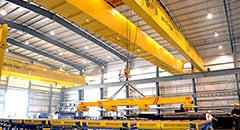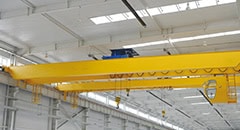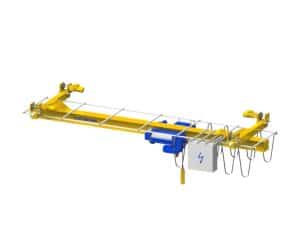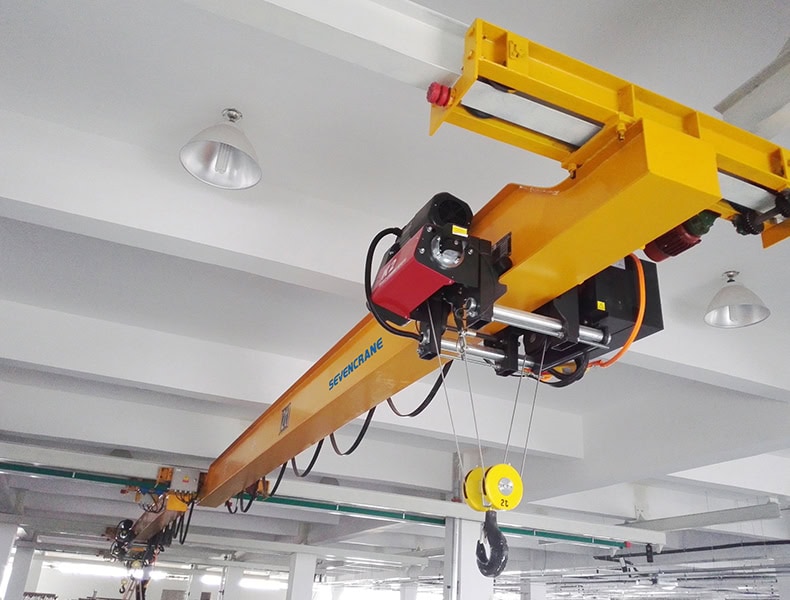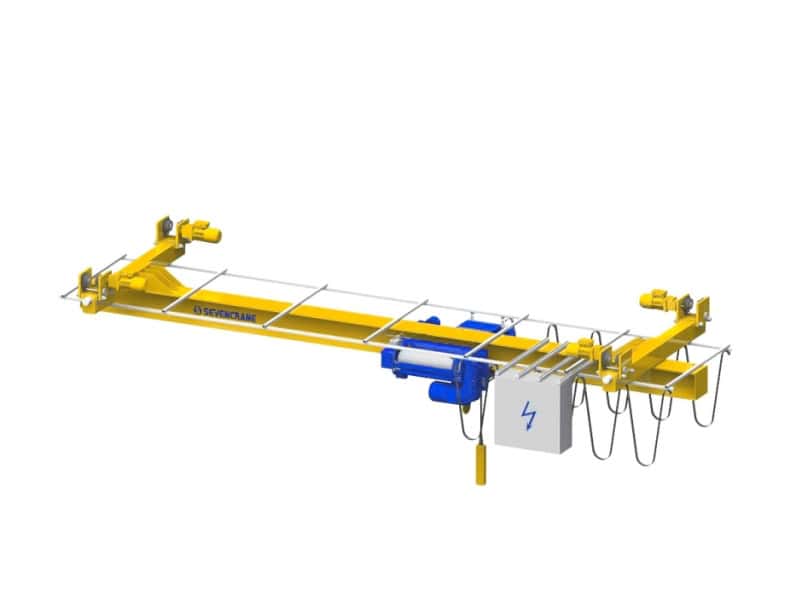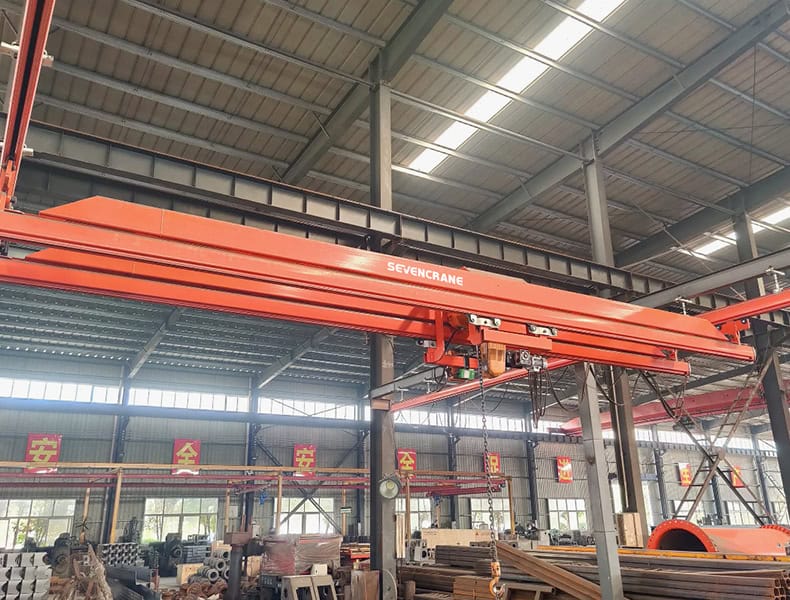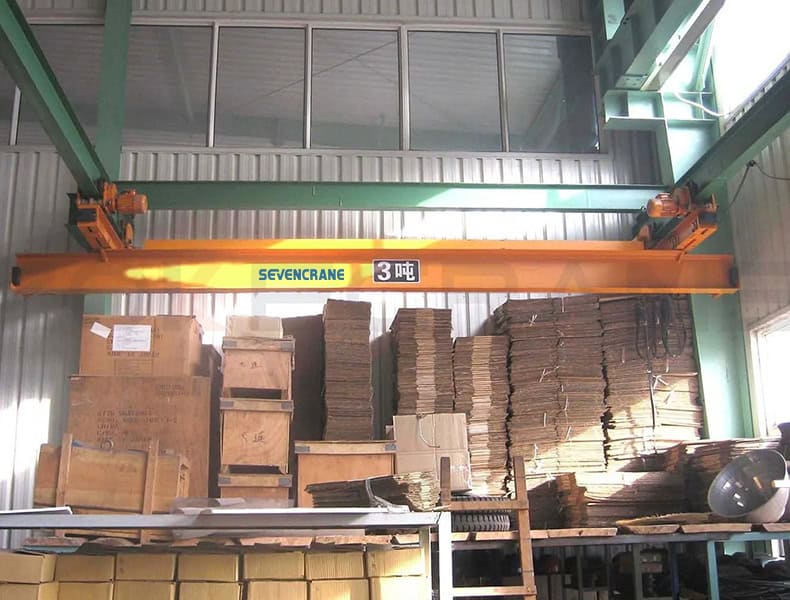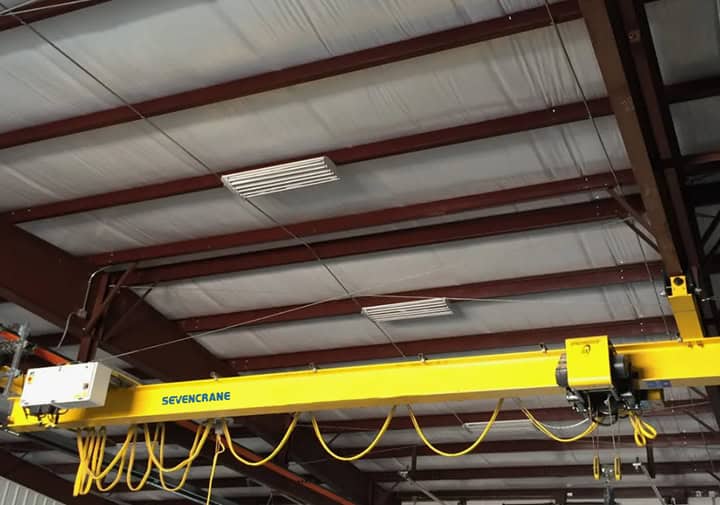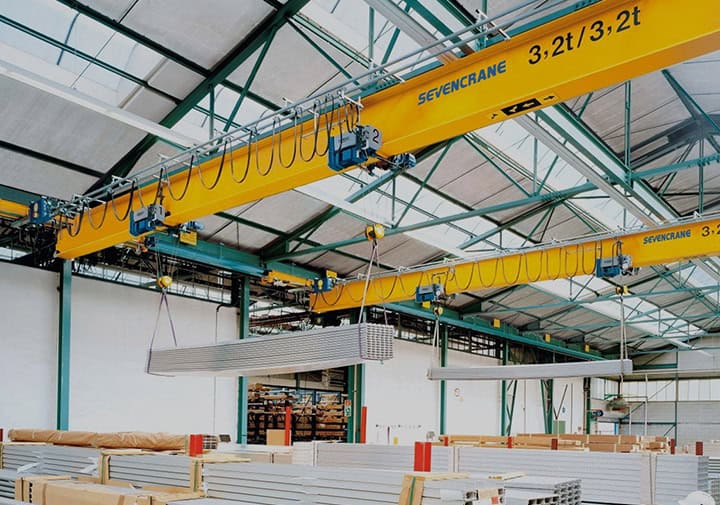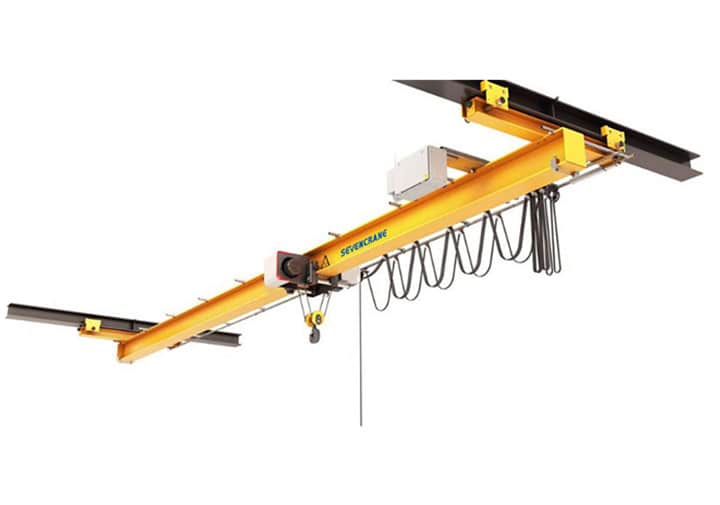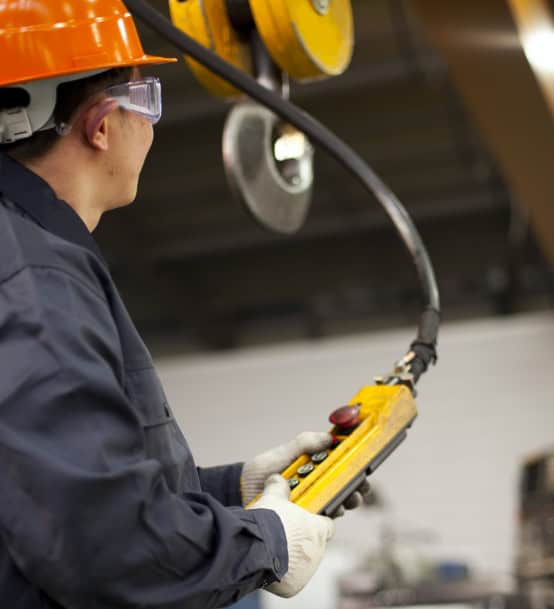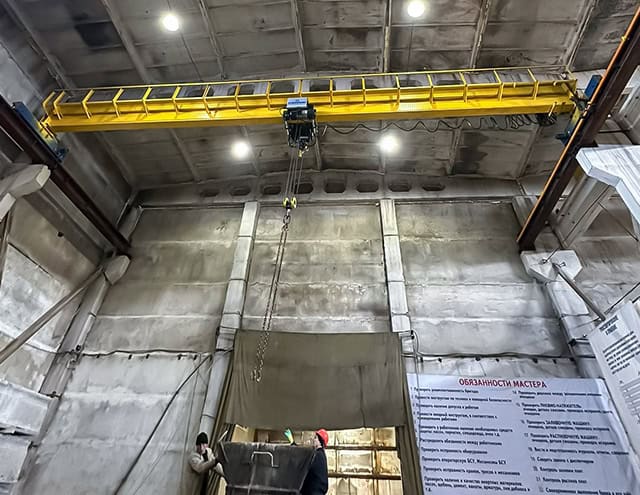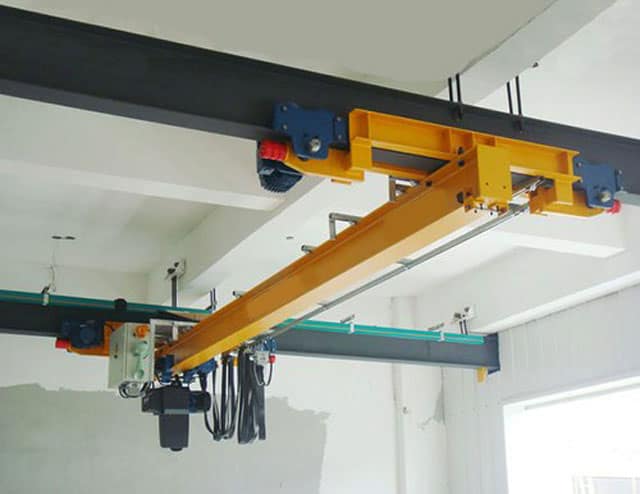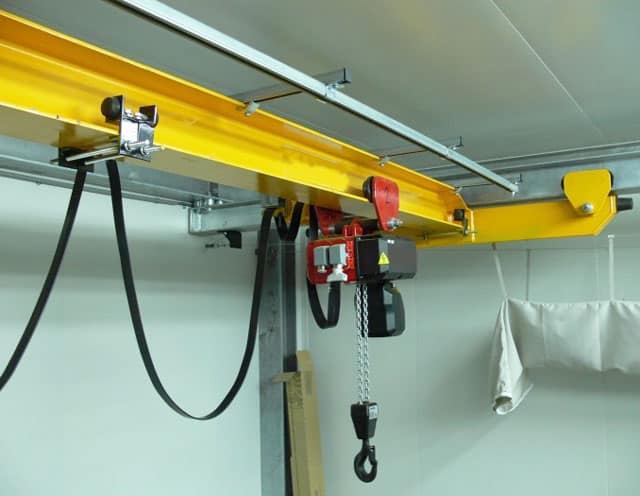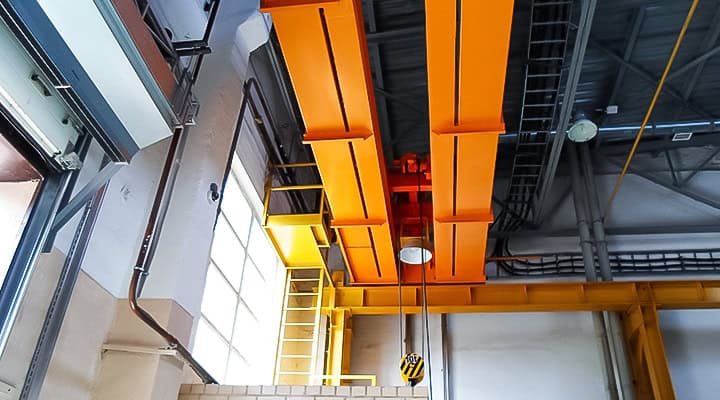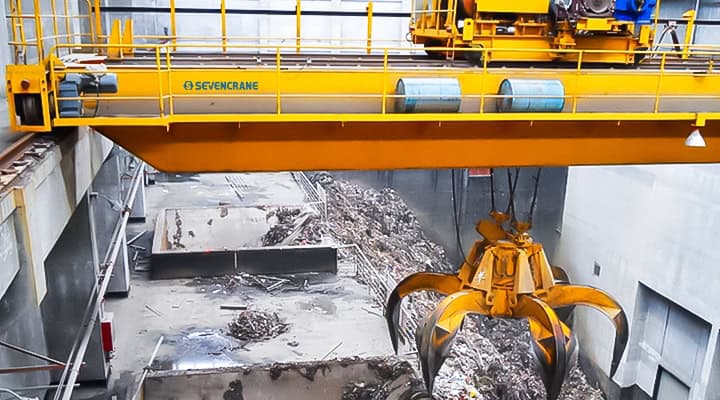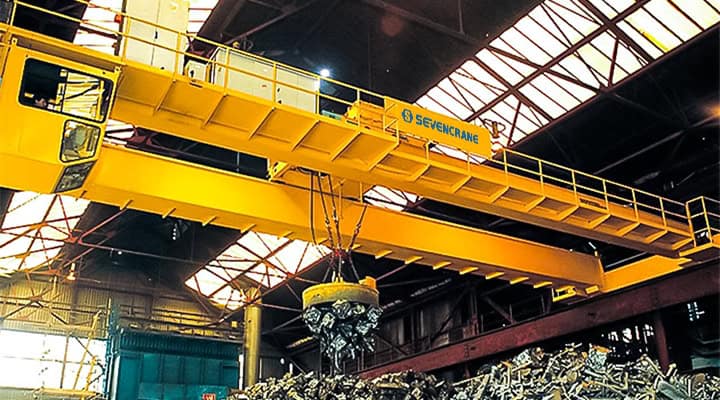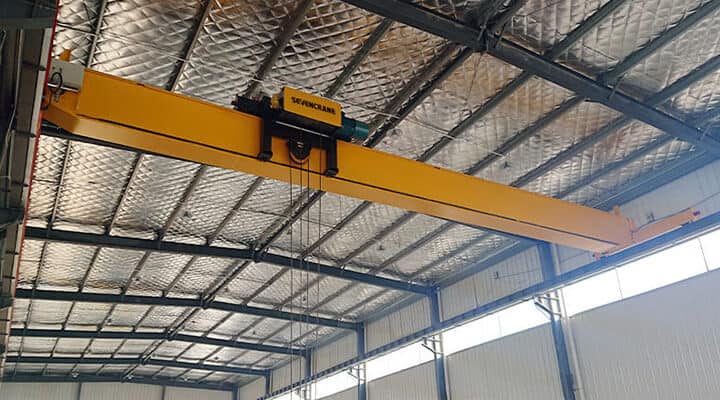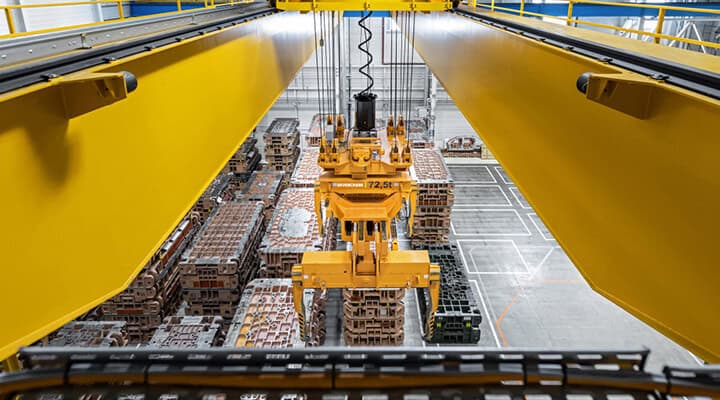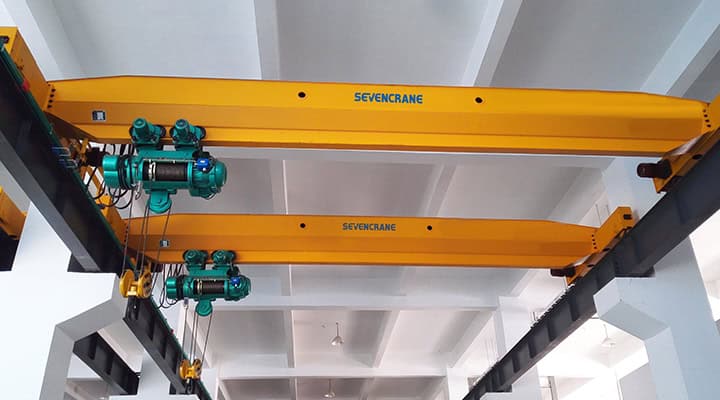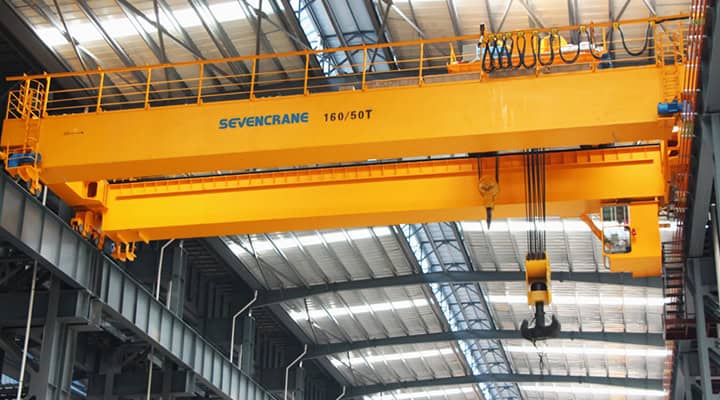The underhung crane is used in combination with an electric hoist to form a light and small lifting device that runs on rails. The device is suitable for working levels A3 to A4, can operate in an ambient temperature range of -25℃ to +40℃ and under conditions of relative humidity ≤85%, and is not suitable for environments with flammable, explosive or corrosive gases. Its lifting capacity range is 0.5 tons to 10 tons, and the span can reach 3 meters to 22.5 meters.
Main components:
bridge steel structure, electric trolley, driving trolley, engine, driving device, wheel set, electric hoist, control method, electrical control system
Application areas:
Due to its lighter lifting capacity, underhung crane is widely used in parts assembly, manufacturing, pallet handling, injection molding, warehousing and loading and unloading, equipment maintenance and other links.
Advantages:
1.Suitable for light to medium workloads.
2.Maximizes floor space when there is already a ceiling truss or roof structure support.
3.No runway support column is required, which helps reduce material costs.
4.The end hook approach, bridge and hoist are all located below the runway beam, optimizing the design.
5.Compact structure, strong rigidity, easy operation, low noise, safe and reliable, and elegant appearance.
Underhung crane vs top running crane:
Underhung cranes may be more complicated to install and maintain than top running cranes, which may result in longer downtime. Since underhung cranes are suspended on tracks, it may take more time to check alignment or maintain wheels. However, it is relatively easy to adjust and maintain alignment, and since it runs on I-beams fixed to the building structure, movement is restricted, so there is less chance of track problems.

